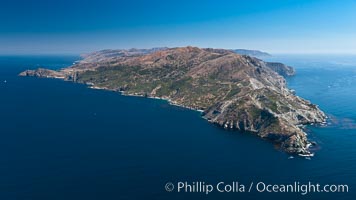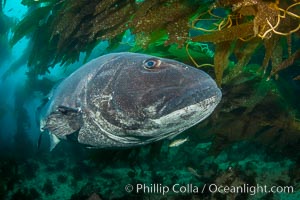
An Endangered Giant Sea Bass can reach up to 8 feet in length and 500 pounds, seen here amid the giant kelp forest of Catalina Island.
Species: Giant black sea bass, Stereolepis gigas
Location: Catalina Island, California
Image ID: 33358
Species: Giant black sea bass, Stereolepis gigas
Location: Catalina Island, California
Image ID: 33358
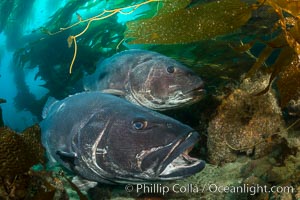
Giant black sea bass, gathering in a mating - courtship aggregation amid kelp forest, Catalina Island.
Species: Giant black sea bass, Stereolepis gigas
Location: Catalina Island, California
Image ID: 33359
Species: Giant black sea bass, Stereolepis gigas
Location: Catalina Island, California
Image ID: 33359
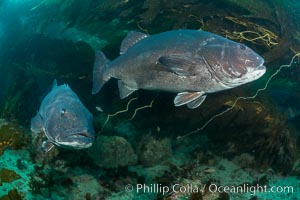
Two Giant black sea bass hover in the kelp forest as a courting pair, part of a larger mating aggregation at Catalina Island. In summer months, giant black seabass gather in kelp forests in California to form mating aggregations leading to spawning. Courtship behaviors include circling of pairs of giant sea bass, production of booming sounds by presumed males, and nudging of females by males in what is though to be an effort to encourage spawning.
Species: Giant black sea bass, Stereolepis gigas
Location: Catalina Island, California
Image ID: 33360
Species: Giant black sea bass, Stereolepis gigas
Location: Catalina Island, California
Image ID: 33360
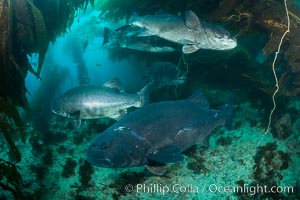
Five giant black sea bass in a mating and courtship aggregation in the kelp forest at Catalina Island. In summer months, black seabass gather in kelp forests in California to form mating aggregations leading to spawning. Courtship behaviors include circling of pairs of giant sea bass, production of booming sounds by presumed males, and nudging of females by males in what is though to be an effort to encourage spawning.
Species: Giant black sea bass, Stereolepis gigas
Location: Catalina Island, California
Image ID: 33361
Species: Giant black sea bass, Stereolepis gigas
Location: Catalina Island, California
Image ID: 33361
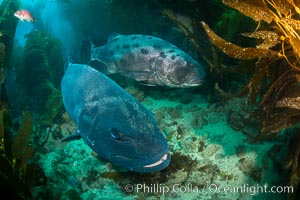
Two Giant sea bass comprise a courting pair as part of a larger mating aggregation amid the kelp forest at Catalina Island. In summer months, giant seabass gather in kelp forests in California to form mating aggregations leading to spawning. Courtship behaviors include circling of pairs of giant sea bass, production of booming sounds by presumed males, and nudging of females by males in what is though to be an effort to encourage spawning.
Species: Giant black sea bass, Stereolepis gigas
Location: Catalina Island, California
Image ID: 33362
Species: Giant black sea bass, Stereolepis gigas
Location: Catalina Island, California
Image ID: 33362
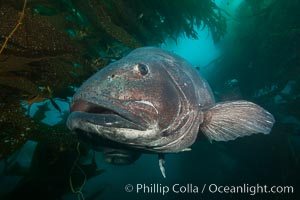
A giant black sea bass is an endangered species that can reach up to 8 feet in length and 500 pounds, often found amid the giant kelp forest, Once nearly fished to extinction and now thought to be at risk of a genetic bottleneck, the giant sea bass is slowly recovering and can be seen in summer months in California's kelp forests.
Species: Giant black sea bass, Stereolepis gigas
Location: Catalina Island, California
Image ID: 33363
Species: Giant black sea bass, Stereolepis gigas
Location: Catalina Island, California
Image ID: 33363
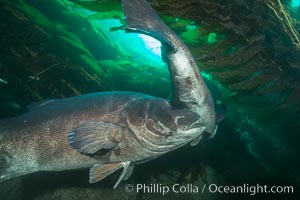
A male giant sea bass nudges a female giant sea bass to encourage spawning as they swim in a tight circle. This courting pair of giant sea bass is deep in the kelp forest at Catalina Island. In summer months, giant sea bass gather in kelp forests in California to form courtship and mating aggregations, eventually leading to spawning.
Species: Giant black sea bass, Stereolepis gigas
Location: Catalina Island, California
Image ID: 33364
Species: Giant black sea bass, Stereolepis gigas
Location: Catalina Island, California
Image ID: 33364
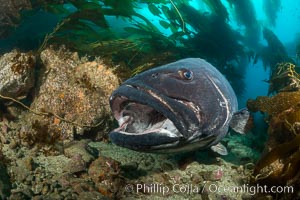
Giant black sea bass, endangered species, reaching up to 8' in length and 500 lbs, amid giant kelp forest.
Species: Giant black sea bass, Stereolepis gigas
Location: Catalina Island, California
Image ID: 33378
Species: Giant black sea bass, Stereolepis gigas
Location: Catalina Island, California
Image ID: 33378
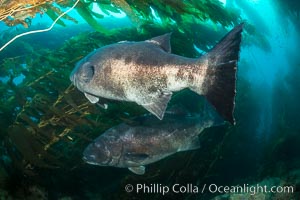
Giant black sea bass, gathering in a mating - courtship aggregation amid kelp forest, Catalina Island.
Species: Giant black sea bass, Stereolepis gigas
Location: Catalina Island, California
Image ID: 33379
Species: Giant black sea bass, Stereolepis gigas
Location: Catalina Island, California
Image ID: 33379
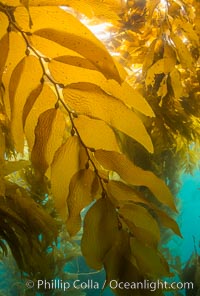
Giant kelp frond showing pneumatocysts. Small gas bladders -- pneumatocysts -- connect the kelp's stipes ("stems") to its blades ("leaves"). These bladders help elevate the kelp plant from the bottom, towards sunlight and the water's surface.
Species: Giant kelp, Macrocystis pyrifera
Location: Catalina Island, California
Image ID: 33439
Species: Giant kelp, Macrocystis pyrifera
Location: Catalina Island, California
Image ID: 33439
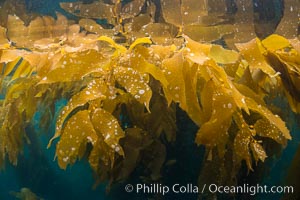
Giant kelp frond showing pneumatocysts. Small gas bladders -- pneumatocysts -- connect the kelp's stipes ("stems") to its blades ("leaves"). These bladders help elevate the kelp plant from the bottom, towards sunlight and the water's surface.
Species: Giant kelp, Macrocystis pyrifera
Location: Catalina Island, California
Image ID: 33440
Species: Giant kelp, Macrocystis pyrifera
Location: Catalina Island, California
Image ID: 33440
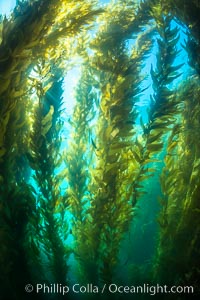
Sunlight streams through giant kelp forest. Giant kelp, the fastest growing plant on Earth, reaches from the rocky reef to the ocean's surface like a submarine forest.
Species: Giant kelp, Macrocystis pyrifera
Location: Catalina Island, California
Image ID: 33441
Species: Giant kelp, Macrocystis pyrifera
Location: Catalina Island, California
Image ID: 33441
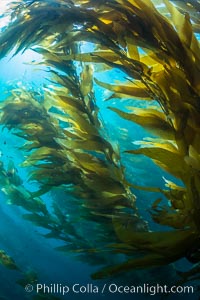
Sunlight streams through giant kelp forest. Giant kelp, the fastest growing plant on Earth, reaches from the rocky reef to the ocean's surface like a submarine forest.
Species: Giant kelp, Macrocystis pyrifera
Location: Catalina Island, California
Image ID: 33442
Species: Giant kelp, Macrocystis pyrifera
Location: Catalina Island, California
Image ID: 33442
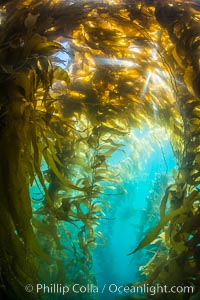
Sunlight streams through giant kelp forest. Giant kelp, the fastest growing plant on Earth, reaches from the rocky reef to the ocean's surface like a submarine forest.
Species: Giant kelp, Macrocystis pyrifera
Location: Catalina Island, California
Image ID: 33443
Species: Giant kelp, Macrocystis pyrifera
Location: Catalina Island, California
Image ID: 33443
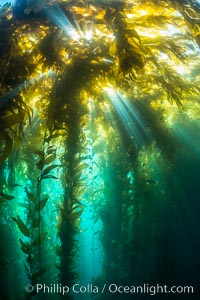
Sunlight streams through giant kelp forest. Giant kelp, the fastest growing plant on Earth, reaches from the rocky reef to the ocean's surface like a submarine forest.
Species: Giant kelp, Macrocystis pyrifera
Location: Catalina Island, California
Image ID: 33444
Species: Giant kelp, Macrocystis pyrifera
Location: Catalina Island, California
Image ID: 33444
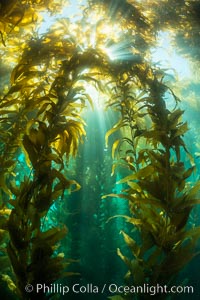
Sunlight streams through giant kelp forest. Giant kelp, the fastest growing plant on Earth, reaches from the rocky reef to the ocean's surface like a submarine forest.
Species: Giant kelp, Macrocystis pyrifera
Location: Catalina Island, California
Image ID: 33445
Species: Giant kelp, Macrocystis pyrifera
Location: Catalina Island, California
Image ID: 33445
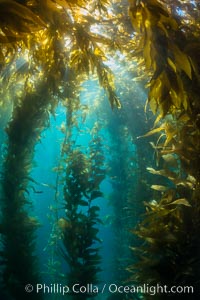
Sunlight streams through giant kelp forest. Giant kelp, the fastest growing plant on Earth, reaches from the rocky reef to the ocean's surface like a submarine forest.
Species: Giant kelp, Macrocystis pyrifera
Location: Catalina Island, California
Image ID: 33446
Species: Giant kelp, Macrocystis pyrifera
Location: Catalina Island, California
Image ID: 33446
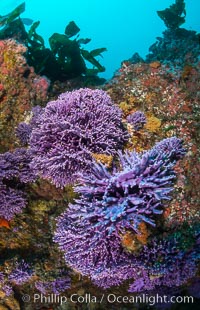
Submarine Reef with Hydrocoral and Invertebrates, Farnsworth Banks, Catalina Island.
Species: Hydrocoral, Allopora californica, Stylaster californicus
Location: Catalina Island, California
Image ID: 34194
Species: Hydrocoral, Allopora californica, Stylaster californicus
Location: Catalina Island, California
Image ID: 34194
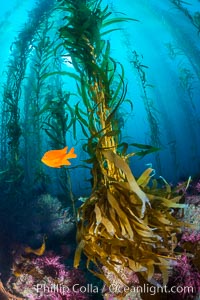
Kelp holdfast attaches the plant to the rocky reef on the oceans bottom. Kelp blades are visible above the holdfast, swaying in the current.
Location: Catalina Island, California
Image ID: 34212
Location: Catalina Island, California
Image ID: 34212
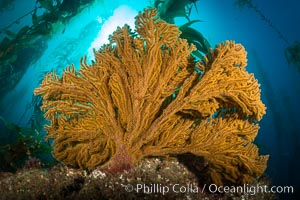
Golden gorgonian on underwater rocky reef, amid kelp forest, Catalina Island. The golden gorgonian is a filter-feeding temperate colonial species that lives on the rocky bottom at depths between 50 to 200 feet deep. Each individual polyp is a distinct animal, together they secrete calcium that forms the structure of the colony. Gorgonians are oriented at right angles to prevailing water currents to capture plankton drifting by.
Species: California golden gorgonian, Muricea californica
Location: Catalina Island, California
Image ID: 34219
Species: California golden gorgonian, Muricea californica
Location: Catalina Island, California
Image ID: 34219
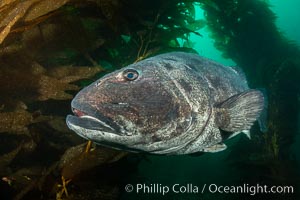
A giant black sea bass is an endangered species that can reach up to 8 feet in length and 500 pounds, often found amid the giant kelp forest, Once nearly fished to extinction and now thought to be at risk of a genetic bottleneck, the giant sea bass is slowly recovering and can be seen in summer months in California's kelp forests.
Species: Giant black sea bass, Stereolepis gigas
Location: Catalina Island, California
Image ID: 34616
Species: Giant black sea bass, Stereolepis gigas
Location: Catalina Island, California
Image ID: 34616
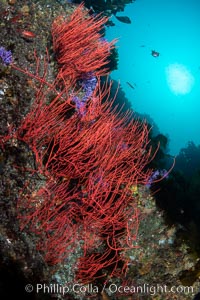
Red gorgonian with polyps retracted, Leptogorgia chilensis, Farnsworth Banks, Catalina Island, California.
Species: Red gorgonian, Leptogorgia chilensis, Lophogorgia chilensis
Location: Catalina Island, California
Image ID: 37263
Species: Red gorgonian, Leptogorgia chilensis, Lophogorgia chilensis
Location: Catalina Island, California
Image ID: 37263
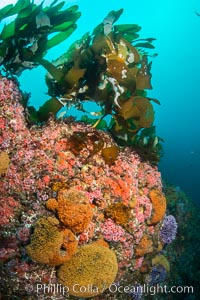
Submarine Reef with Bryozoan clusters, Hydrocoral and Invertebrates, Farnsworth Banks, Catalina Island.
Species: Hydrocoral, Strawberry anemone, Allopora californica, Corynactis californica, Stylaster californicus
Location: Catalina Island, California
Image ID: 34189
Species: Hydrocoral, Strawberry anemone, Allopora californica, Corynactis californica, Stylaster californicus
Location: Catalina Island, California
Image ID: 34189
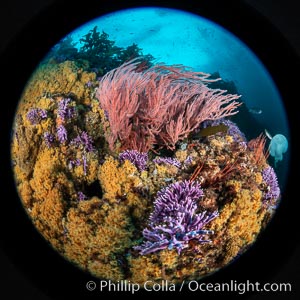
Red gorgonian Leptogorgia chilensis, purple hydrocoral Stylaster californicus, and yellow zoanthid anemone Epizoanthus giveni, at Farnsworth Banks, Catalina Island.
Species: Red gorgonian, Hydrocoral, Givens Zoanthid, Leptogorgia chilensis, Lophogorgia chilensis, Allopora californica, Stylaster californicus, Epizoanthus giveni
Location: Catalina Island, California
Image ID: 37220
Species: Red gorgonian, Hydrocoral, Givens Zoanthid, Leptogorgia chilensis, Lophogorgia chilensis, Allopora californica, Stylaster californicus, Epizoanthus giveni
Location: Catalina Island, California
Image ID: 37220
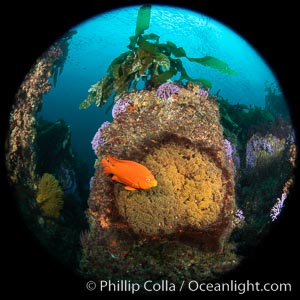
Garibaldi maintains a patch of orange algae (just in front of the fish) to entice a female to lay a clutch of eggs, Farnsworth Banks, Catalina Island.
Species: Garibaldi, Hypsypops rubicundus
Location: Catalina Island, California
Image ID: 37255
Species: Garibaldi, Hypsypops rubicundus
Location: Catalina Island, California
Image ID: 37255
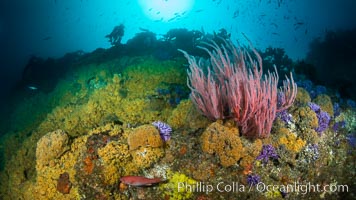
Red gorgonian Leptogorgia chilensis with yellow zoanthid anemone Epizoanthis giveni, Farnsworth Banks, Catalina Island, California.
Species: Red gorgonian, Givens Zoanthid, Leptogorgia chilensis, Lophogorgia chilensis, Epizoanthus giveni
Location: Catalina Island, California
Image ID: 37269
Species: Red gorgonian, Givens Zoanthid, Leptogorgia chilensis, Lophogorgia chilensis, Epizoanthus giveni
Location: Catalina Island, California
Image ID: 37269
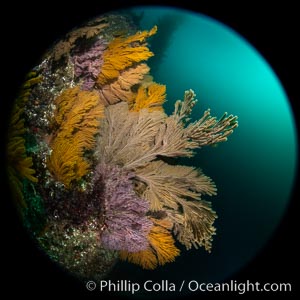
Brown gorgonian and California golden gorgonian on underwater rocky reef below kelp forest, Catalina Island. Gorgonians are filter-feeding temperate colonial species that lives on the rocky bottom at depths between 50 to 200 feet deep. Each individual polyp is a distinct animal, together they secrete calcium that forms the structure of the colony. Gorgonians are oriented at right angles to prevailing water currents to capture plankton drifting by.
Species: Brown gorgonian, California golden gorgonian, Muricea californica, Muricea fruticosa
Location: Catalina Island, California
Image ID: 37292
Species: Brown gorgonian, California golden gorgonian, Muricea californica, Muricea fruticosa
Location: Catalina Island, California
Image ID: 37292
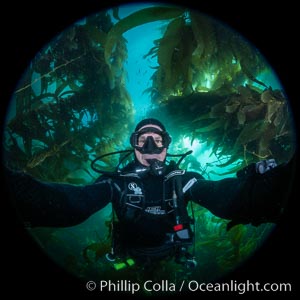
Selfie, giant kelp forest, Catalina Island.
Species: Giant kelp, Macrocystis pyrifera
Location: Catalina Island, California
Image ID: 37296
Species: Giant kelp, Macrocystis pyrifera
Location: Catalina Island, California
Image ID: 37296
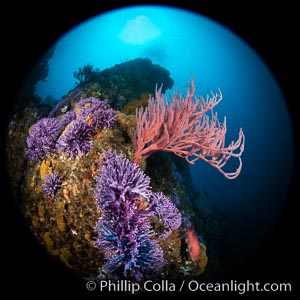
Red gorgonian (Lophogorgia chilensis) rises above fields of purple hydrocoral (Stylaster californicus, Allopora californica) on Farnsworth Bank, Catalina Island.
Species: Hydrocoral, Red gorgonian, Allopora californica, Stylaster californicus, Leptogorgia chilensis, Lophogorgia chilensis
Location: Catalina Island, California
Image ID: 37179
Species: Hydrocoral, Red gorgonian, Allopora californica, Stylaster californicus, Leptogorgia chilensis, Lophogorgia chilensis
Location: Catalina Island, California
Image ID: 37179
